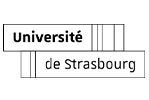Study of the fate of chemical elements in the Rhine ecosystem: upstream and downstream of the Fessenheim nuclear power plant (NPP)
The first and second reactors of the Fessenheim Nuclear Power Plant were shut down in February and June 2020, respectively. The idea of establishing an environmental state T0 after the closure of the Fessenheim plant arose with a view to a territorial upgrading. In this context, the issue of aquatic ecotoxicity has become relevant. The fate and effects of certain trace metals as well as tritium must therefore be quantified to determine aquatic ecotoxicity. The first step of this study is based on the fate of certain trace metals (Al, Cr, Fe) and tritium (3H) in the GCA and the Rhine river over a total distance of 80 km upstream and downstream of the Fessenheim plant. Monitoring these chemical elements from 2018 to 2021 allows us to reflect on the contribution of the Fessenheim plant to aquatic pollution. In June 2018, it had an influence on the Al concentration in the GCA (2600 µg / L at its discharge point), probably linked to a phenomenon of corrosion of the circuits present in industrial installation. Enrichment factor (EF) calculations for 56Fe and 52Cr, for 2018, June 2020, Oct 2020 and, March 2021, showed that the shutdown of the nuclear plant reduced the 52Cr contamination. On the other hand, the EF results for the 56Fe do not show a significant impact of the plant. However, EDF announces up to 2180 µg / L of iron at the discharge point in June 2018, so it is impossible to say that the Fessenheim plant is not participating in this pollution. Moreover, there is a significant dilution factor generated by the high river flow. There may be effects of low doses here. The results concerning tritium 3H, an activation product characteristic of nuclear power plants, showed that the Fessenheim plant had a low contribution to this pollution which could be generated by Swiss watchmakers and hospitals.




